Saxum is built in the Arab village of Abu Ghosh, located about 12 kilometers from Jerusalem.
Throughout history, the village of Abu Ghosh has borne several names. The Book of Joshua recalls its Canaanite name—Kiriath-baal—later transformed into Kiriath-Ye’arim by the Israelites (cf. Jos 15:60; 18:14). In Kiriath-Ye’arim, the Ark of the Covenant remained for 20 years in the house of Abinadab until David brought it to Jerusalem (2 Sm 6). From the 7th century, Muslims called it Qaryat al-‘Inab. It was not until the 17th or 18th century that it took the name of a tribe—some say Arab, others say originating from the Caucasus—the Abu Ghosh, who, according to accounts, settled near the Jerusalem road to extort travelers. Chateaubriand mentions them in his Itinerary from Paris to Jerusalem in 1806. At that time, it was thought to be the city of the prophet Jeremiah.
“The most powerful tribe in the mountains of Judea resides in the village of Jeremiah [Abu Ghosh], and permits or denies, as it pleases, pilgrims’ access to Jerusalem. The scheik or sheikh of this tribe had recently died, leaving his brother-in-law Abu-Gosh as the guardian of his son Utman. Abu-Gosh had two brothers, named Djiaber and Ibrahim-Habd-el-Rouman, who accompanied me on my return.” (Itinerary (ed. D. F. de Mellado, Madrid, 1850, Vol. III, p. 376)).
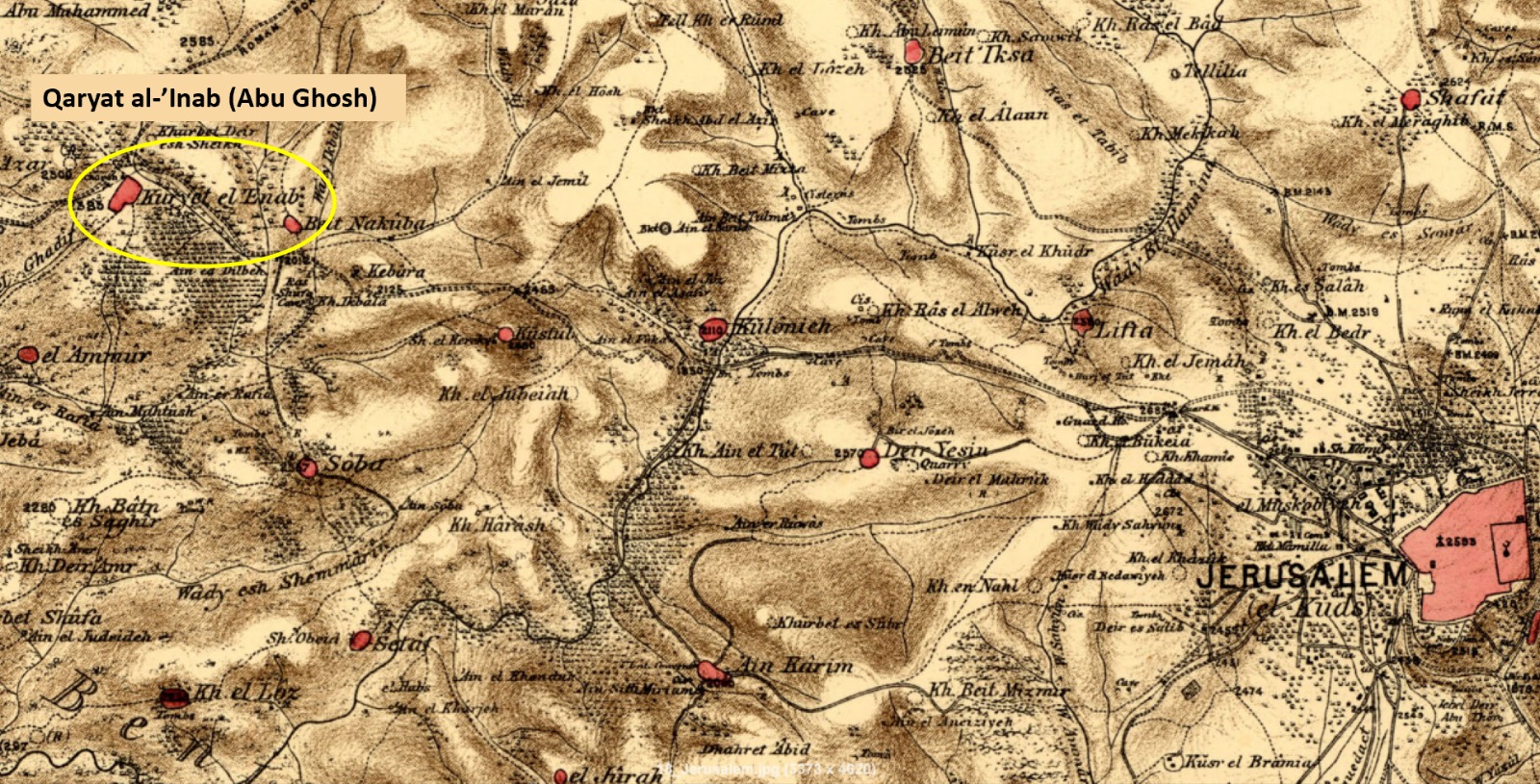
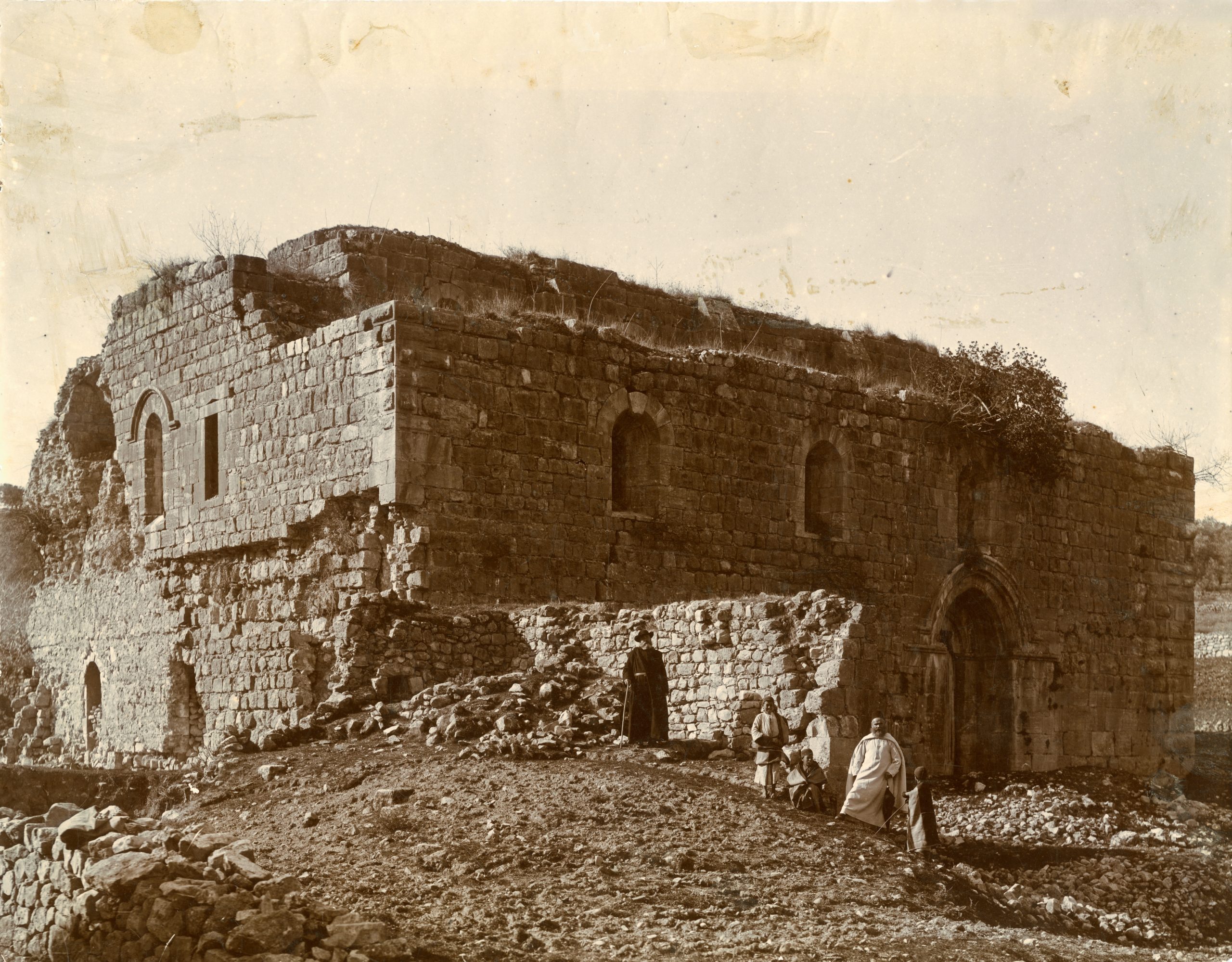
During the period of Frankish occupation (1099–1187), pilgrims called it Castellum Emmaus, believing it was the village to which Cleopas and his companion were heading, as recounted by Saint Luke in the final chapter of his Gospel (Luke 24:13).
“Now that very day two of them were going to a village seven miles from Jerusalem called Emmaus.”
We know that a stadion is approximately 200 meters, so 60 stadia equate to about 12 kilometers. We also know that some manuscripts cite a distance of 160 stadia. The early Christians relied on this latter figure to build the Church of the “Breaking of the Bread” in Emmaus Nicopolis, about 30 kilometers from Jerusalem. When the Crusaders arrived in Jerusalem, the church at Emmaus Nicopolis was abandoned. Although some pilgrims—especially those from the East—continued to stop there to commemorate the Gospel episode, and although the Templars rebuilt the Byzantine church, the Emmaus of the Gospel eventually shifted closer to Jerusalem, in the hills of Judea, to the village of Qaryat al-‘Inab, located at a distance matching the more commonly accepted reading of Luke 24:13, which places Emmaus at 60 stadia (12 km) from Jerusalem.
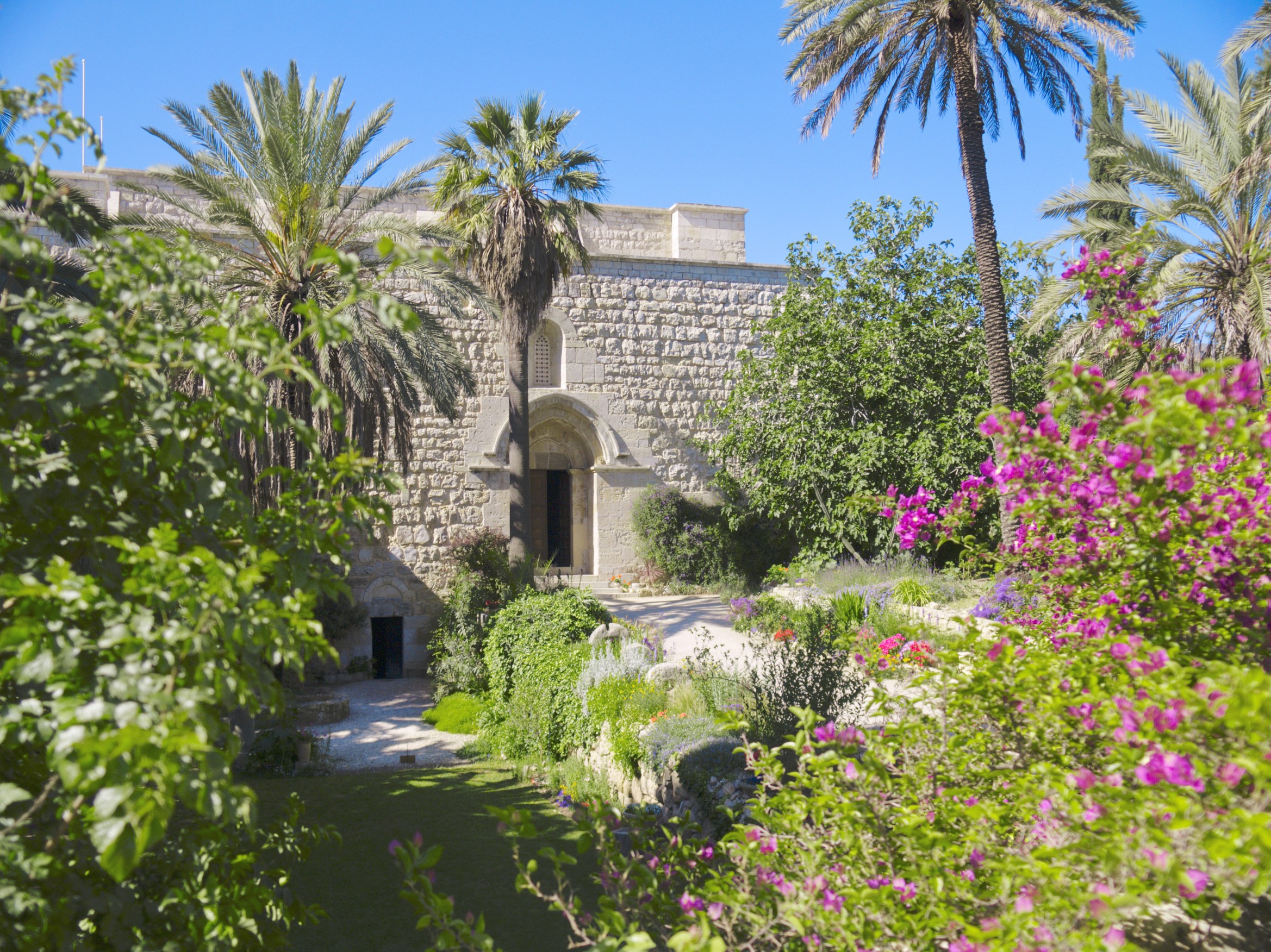
North façade of the Crusader church of Abu Ghosh. Abbey in Abu Gosh
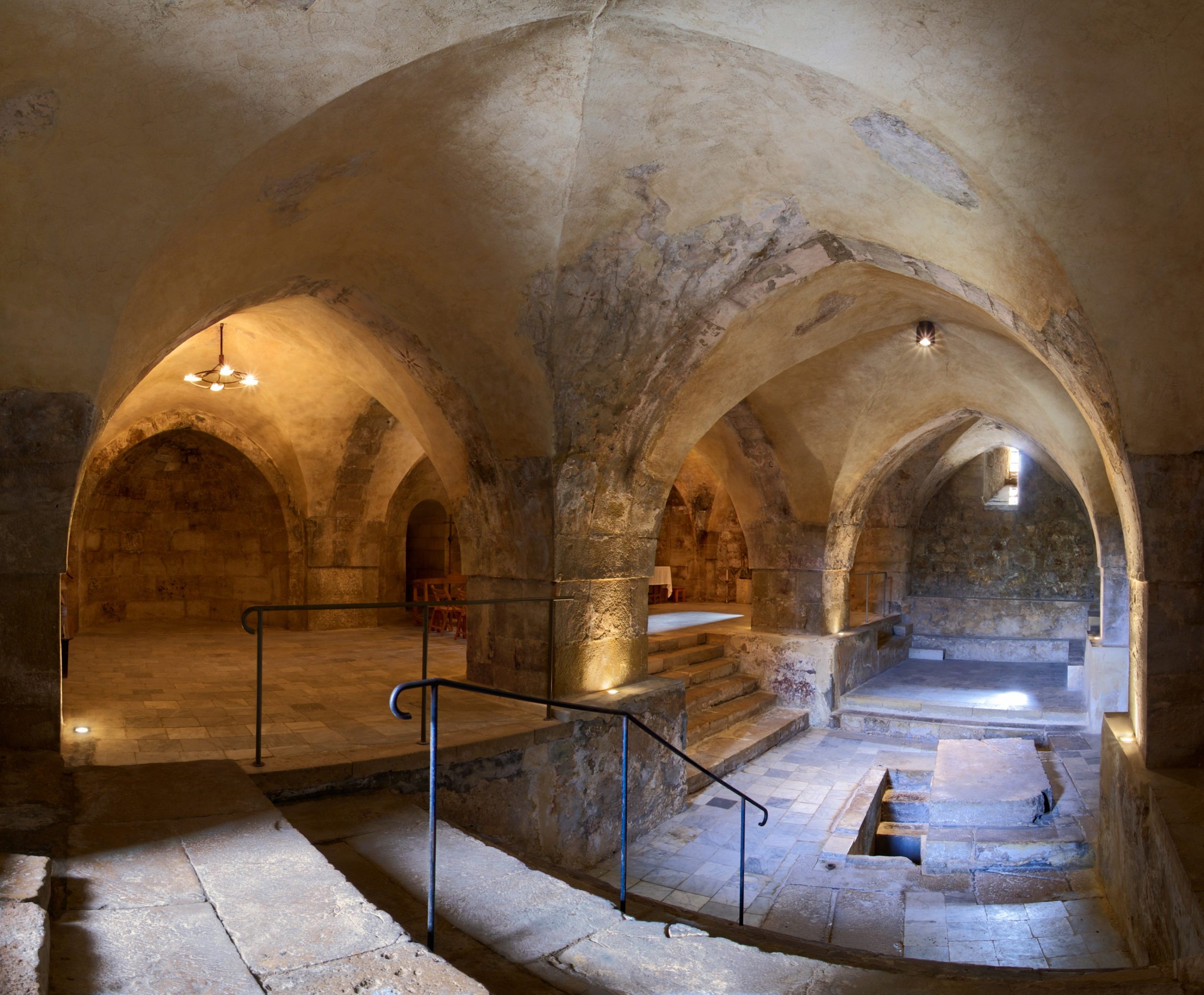
The spring in the crypt. Abbey in Abu Gosh
In the mid-12th century, the Knights of Saint John of the Hospital built a three-nave church over an ancient spring, dedicating it to the Resurrection of the Lord. In the upper nave, murals painted in the 1160s can still be admired. In the central apse, the artists depicted the resurrection of the Lord in a very Byzantine style: Jesus rescuing Adam from the underworld.
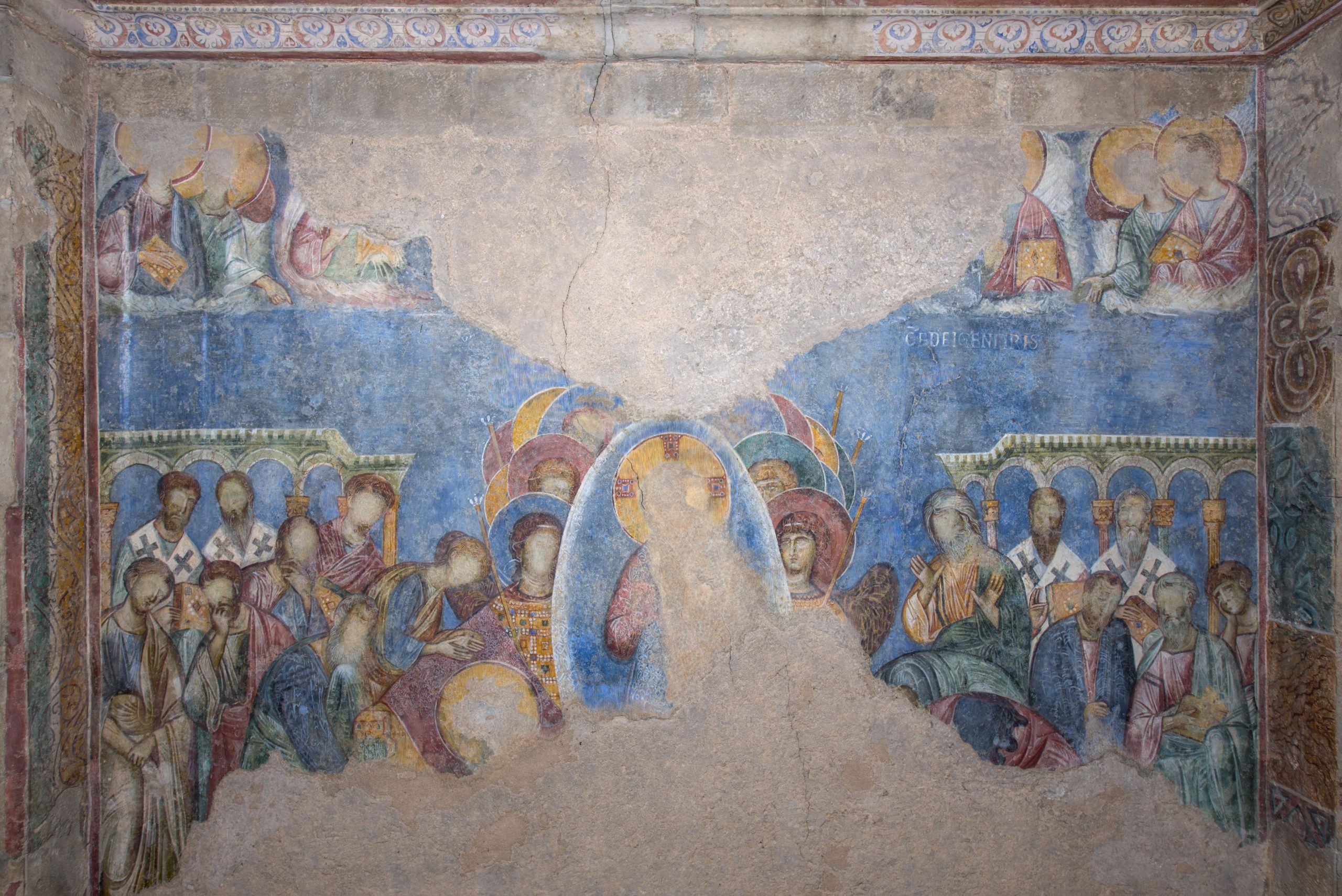
Murals in the upper church. The Dormition and Assumption of the Virgin (north wall)
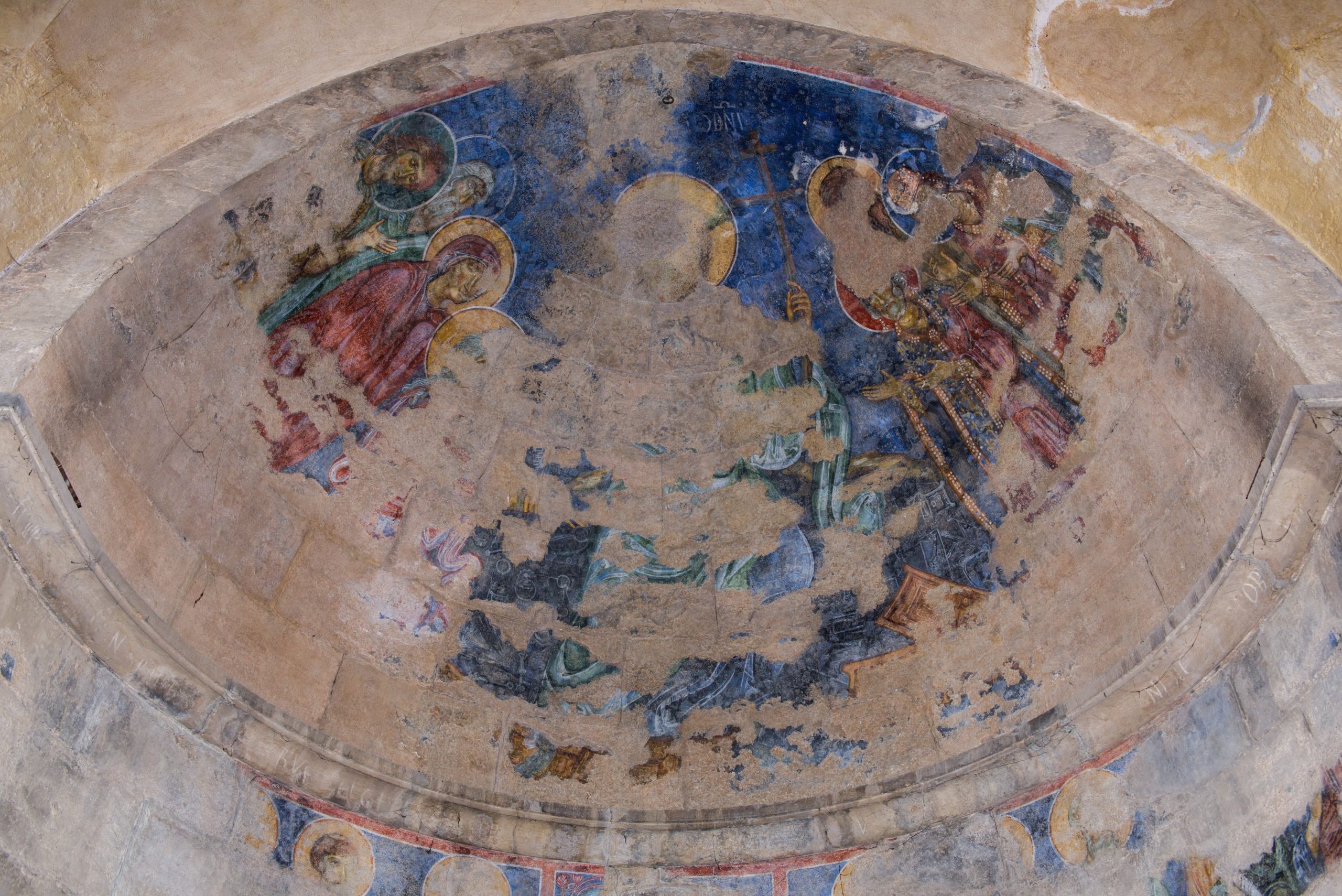
Jesus descending to the underworld to redeem the souls of the righteous (central apse). Abbey in Abu Gosh
Beneath the nave, the crypt houses the ancient spring at its center. It seems this spring has gained significance for pilgrims. For this reason, it was preserved by the Crusader architects. Sozomen, a 5th-century writer, paraphrasing the Gospel passage from Luke, states that upon reaching the spring at Emmaus, while Cleopas and his companion refreshed themselves, Jesus made as if to go on, but yielded to the gentle insistence of his two disciples and stayed with them for supper. While at table with them, “he took bread, said the blessing, broke it, and gave it to them. With that their eyes were opened and they recognized him, but he vanished from their sight” (Luke 24:30b-31a, USCCB).
Everything seemed to support identifying Qaryat al-‘Inab/Abu Ghosh/Castellum Emmaus with the Emmaus of the Gospel: its distance from Jerusalem, its location on the main road, and the presence of this spring within the grounds of an ancient hospice.
By Henri Gourinard
